Trend Forecasting in 2025: Step-by-Step Guide | thouSense
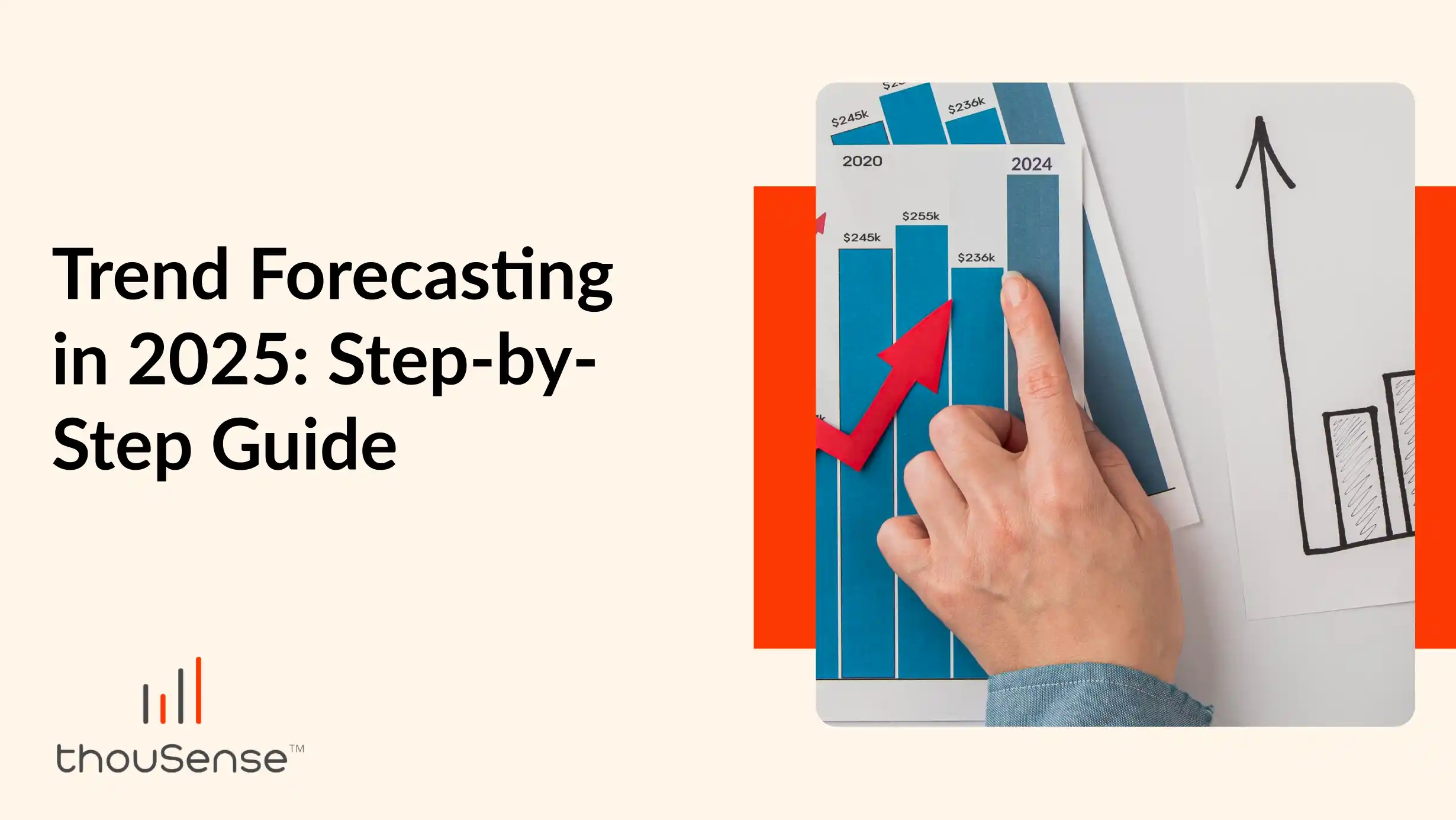
Introduction
Today's business is fast-paced. Staying ahead of market trends is crucial for staying competitive. Trend forecasting is the art and science of predicting future trends based on historical data and current events.
Today's fast-paced business world demands staying ahead of market trends. Doing so is crucial for keeping a competitive edge. The art and science of predicting future trends from past data and current events is known as trend forecasting.
Accurate Trend forecasting is more important than ever. This is for both individuals and corporations. This article will walk you through the procedure of Trend forecasting step-by-step so you can remain ahead of the curve.
What is Trend Forecasting
Studying past and current data lets trend forecasters predict future trends. They can do so with confidence. This is key in many industries, from fashion and technology to finance and healthcare.
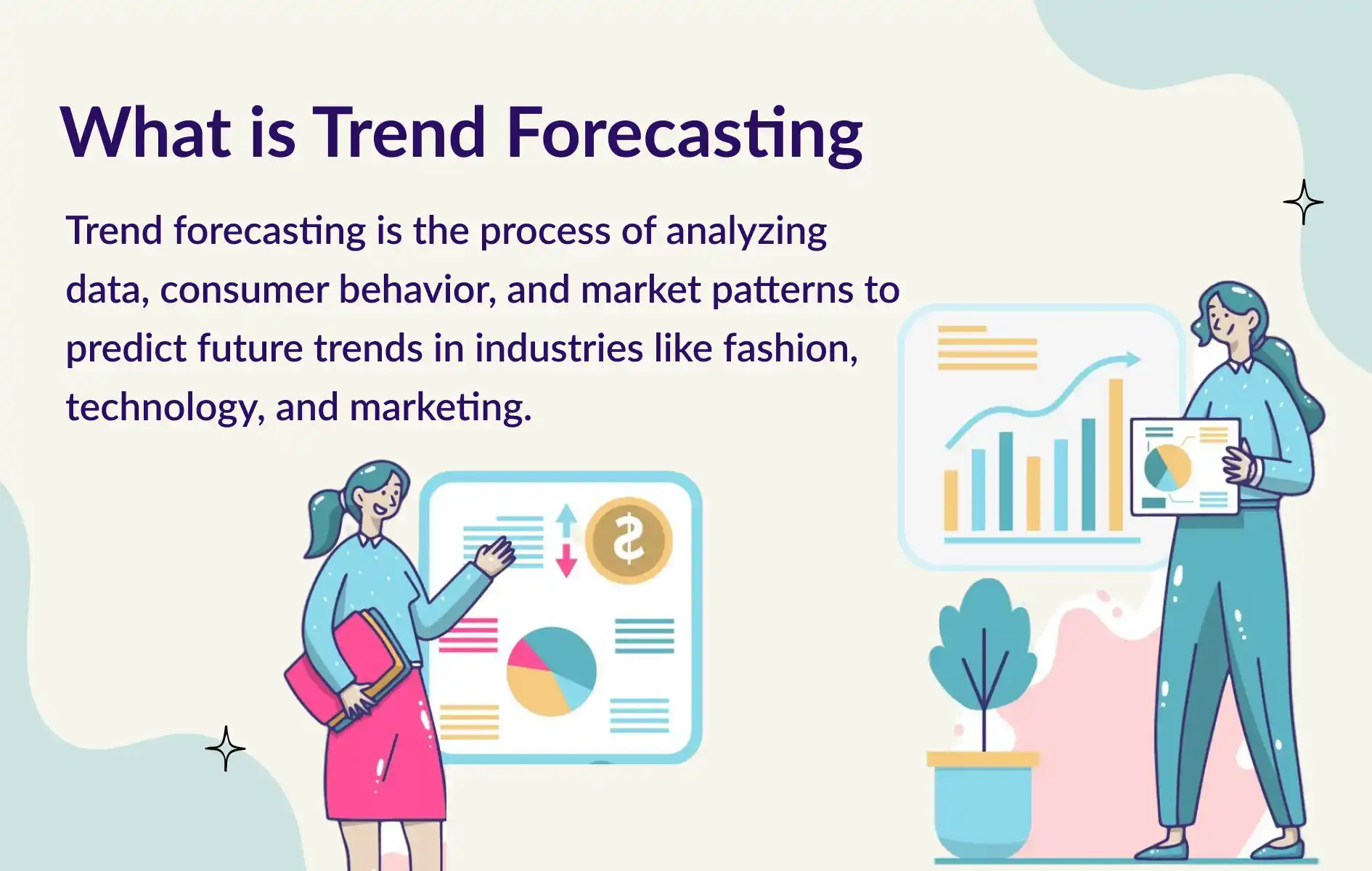
● Historical Perspective
The concept of trend forecasting isn't new. It has evolved a lot. In its early days, analysts relied heavily on manual data collection and gut instincts. Today, advanced technologies and data analytics have transformed the field.
● Current Applications in Various Industries
Trend forecasting is crucial for industries like retail. Predicting consumer preferences can make or break a product line. In technology, anticipating the next big innovation helps companies stay competitive.
Key Components of Trend Forecasting
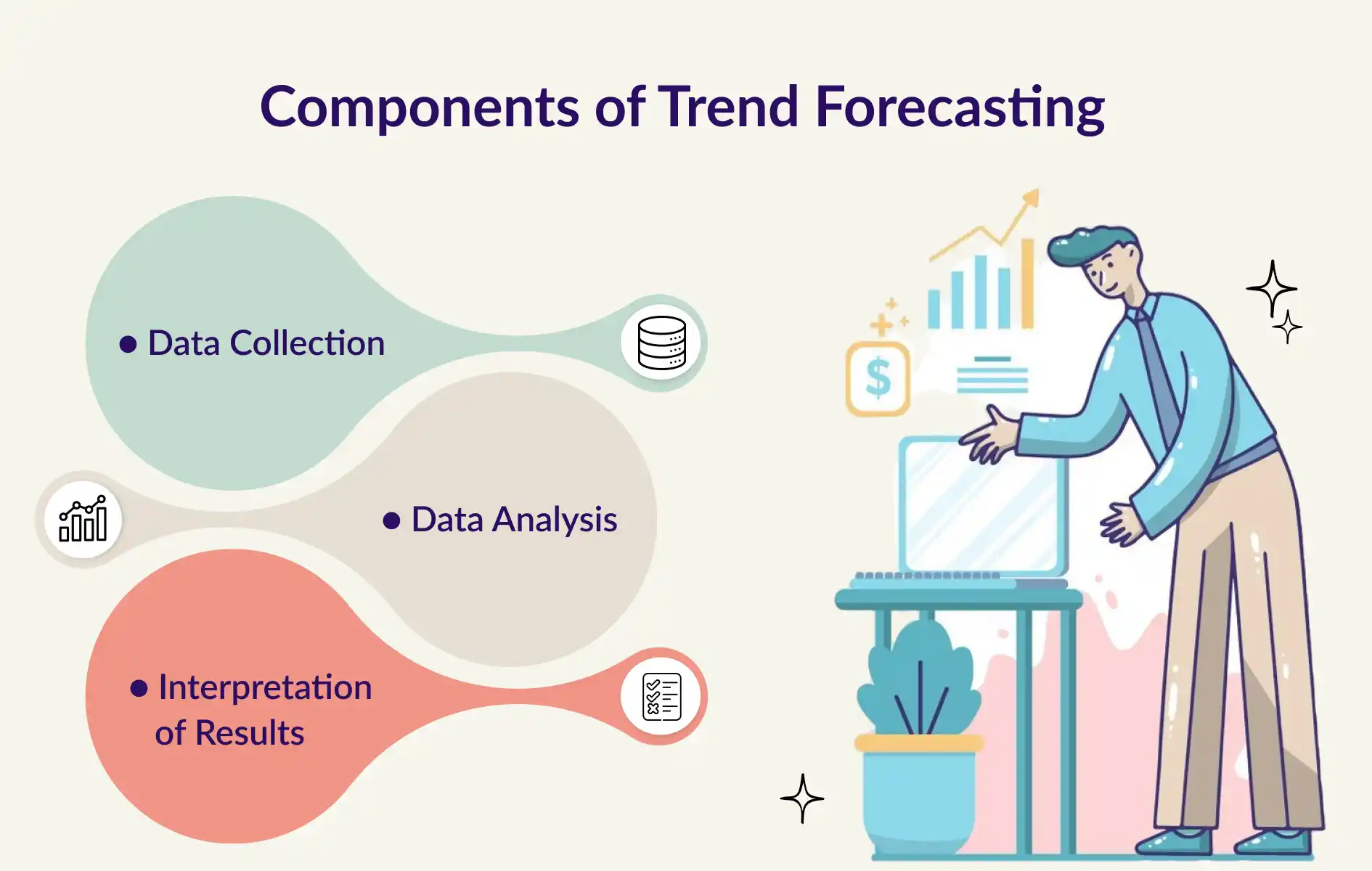
● Data Collection
Collecting accurate and relevant data is the foundation of effective trend forecasting.
● Data Analysis
Once collected, the data must be analyzed using sophisticated tools and techniques. This step involves identifying patterns and making sense of large datasets.
● Interpretation of Results
The final component is interpreting the analyzed data to forecast trends. This involves understanding the implications of the data and making actionable recommendations.
Data Collection Methods
● Interviews and Forms
Surveys and questionnaires are among the most straightforward ways to gather data. With the use of these methods, companies may acquire precise data from their intended market.
● Social Media Information
Social media offers an abundance of data in the digital age. Businesses can learn about the tastes and behavior of their customers by examining social media trends.
● Reports on Market Research
Expert market research papers provide detailed analysis and perceptions on market trends. These papers are excellent sources for precise trend prediction.
Interpreting Trend Data
● Identifying Patterns
Identifying patterns in data is crucial for forecasting trends. Analysts look for recurring themes and anomalies that could indicate emerging trends.
● Forecasting Trends Based on Data
Based on the identified patterns, analysts can make informed predictions about future trends. This step requires a combination of data analysis skills and industry knowledge.
● Visualizing Data for Better Understanding
Tools for data visualization assist in presenting complex data in a way that is simple to comprehend. Graphs, charts, and infographics are essential for communicating trends effectively.
How to forecast trend in 2025
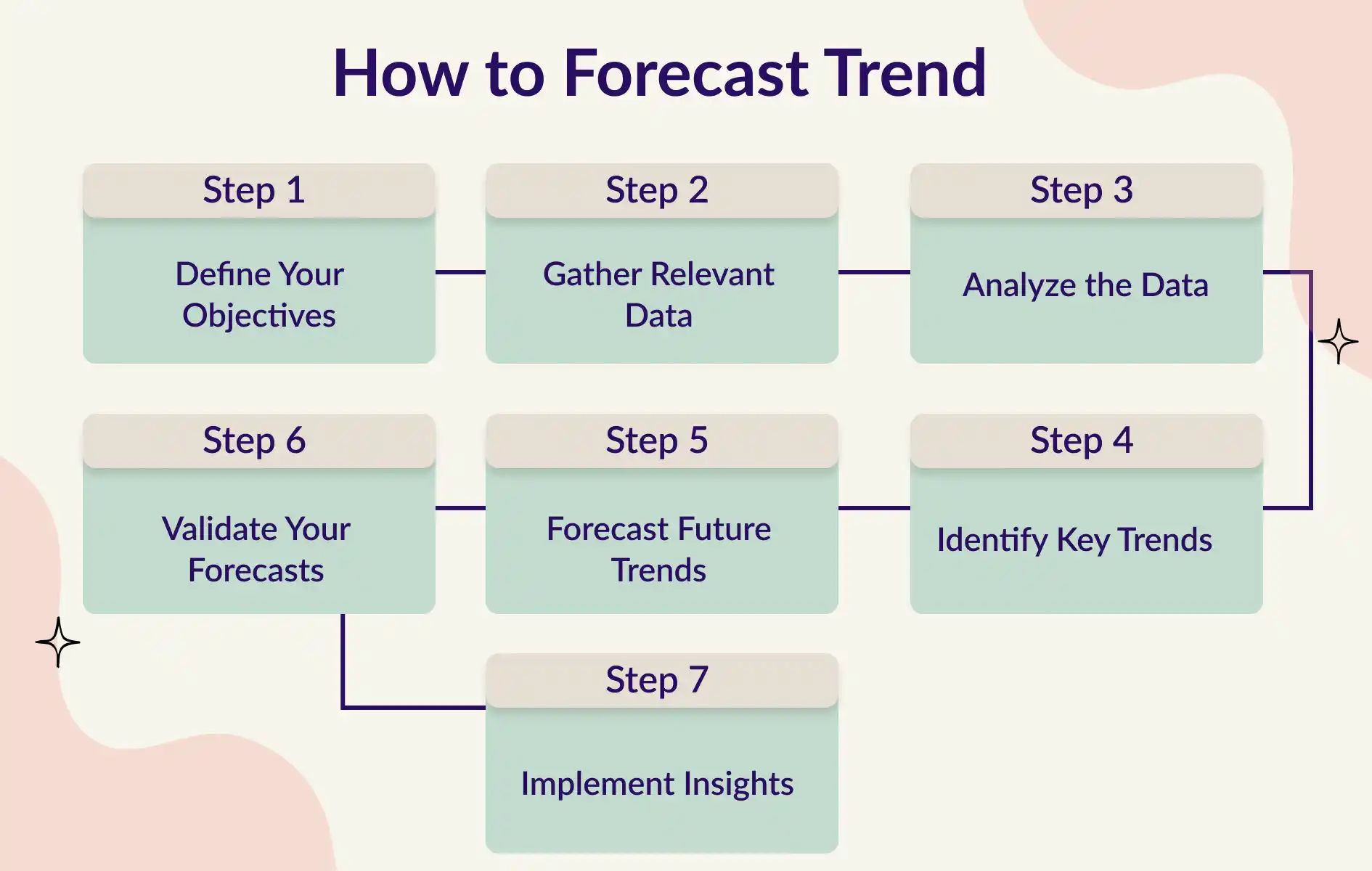
Step 1: Define Your Objectives
Clearly defining your objectives is the foundational step in trend forecasting. It sets the direction and scope of your forecasting efforts. The sheer amount of data and possible trends can quickly overwhelm someone without specific goals.
● Identify Business Goals: Align forecasting efforts with your overarching business goals. For instance, if your goal is market expansion, focus on trends in target regions. Clear goals ensure that the Trends forecasting process remains relevant and focused.
● Focus Areas: Focus areas are to determine specific areas to forecast. These include tech advancements, consumer behavior, market dynamics, and rule changes. Focusing on specific areas prevents dilution of efforts and provides actionable insights.
● Time Frame: Set a clear timeline for your forecasts.
a. Short-term forecasts are for quarters.
b. Medium-term ones are annual.
c. Long-term ones are multi-year.
Each way matters depending on your goals. Different time frames provide a full view. They cover from immediate actions to long-term plans.
Step 2: Gather Relevant Data
Gathering relevant data involves collecting diverse and comprehensive information from multiple sources. This data forms the basis of your trend analysis. The more varied and extensive your data sources, the more accurate and insightful your forecasts will be.
● Use internal data: Leverage sales data, customer feedback, and financial reports. Use them to understand past and current performance. Data from inside your business provides lots of info. It's about the strengths, weaknesses, and market position.
● Use industry reports: Use market research studies and competitor analysis. They give broader market insights. Data from outside helps you understand the competition and market trends. They affect your industry.
● Emerging Sources: Social media analytics, online reviews, and digital footprint analysis provide real-time consumer sentiment and behavior data. These sources are invaluable for capturing the pulse of the market and understanding consumer trends as they develop.
● Historical Data: Reviewing historical data helps identify long-term trends and patterns that can inform future forecasts. Historical data provides context and helps validate the accuracy of your predictions.
Step 3: Analyze the Data
We must analyze the data carefully. We want to find insights and spot new patterns. Data analysis transforms raw information into meaningful insights that drive informed decision-making.
● Statistical Analysis: Use stats tools and software (e.g., SPSS, SAS) to analyze numbers. Find connections, trends, and oddities. Statistical analysis provides a foundation for understanding relationships within the data.
● Trend Identification: Use techniques like content analysis and thematic analysis to interpret qualitative data. They reveal deep consumer insights and sentiments. Qualitative analysis enriches and adds perspective to quantitative findings.
● Trend Identification: Look for patterns and recurring themes within the data that indicate potential trends. Identifying trends requires a combination of analytical skills and market knowledge.
● Scenario Planning: Develop scenarios based on different assumptions about future developments, providing a range of possible outcomes. Scenario planning helps prepare for various possibilities, enhancing strategic flexibility.
Step 4: Identify Key Trends
Finding key trends means identifying the most important patterns. These patterns are likely to affect your business. Focusing on key trends ensures that your efforts are directed towards the most impactful changes.
● Market Trends: Examine changes in market size, growth rates, segmentation, and consumer preferences. Understanding market trends helps you anticipate shifts in demand and identify new opportunities.
● Consumer Trends: Identify shifts in consumer behavior, purchasing habits, and demographic changes. Consumer trends provide insights into how your target audience is evolving and what they value.
● Technological Trends: Stay updated on technological innovations and disruptions that could affect your industry. Technological trends can create new opportunities or pose threats, depending on how they are managed.
● Watch economic trends: Look at indicators like GDP growth, inflation, and employment rates. They show broader economic shifts. Economic trends influence consumer spending and business investment decisions.
Step 5: Forecast Future Trends
Forecasting future trends requires combining many methods. It also needs expert insights to make accurate predictions. Effective forecasting blends quantitative analysis with qualitative judgment.
● Trend Extrapolation: Extend current trends into the future using statistical models, projecting possible future states. Extrapolation helps predict the continuation of existing patterns.
● Expert Opinions: Incorporate insights from industry experts, thought leaders, and market analysts to validate and refine your forecasts. Expert opinions provide context and credibility to your predictions.
● Predictive Modeling: Utilize predictive analytics and AI/ML-based demand forecasting tools to enhance the accuracy of your predictions. Predictive modeling leverages advanced techniques to uncover hidden patterns and predict future outcomes.
● Scenario Analysis: Prepare for different outcomes by developing multiple forecasts based on varying assumptions and potential disruptions. Scenario analysis helps you plan for uncertainty and build resilience into your strategy.
Step 6: Validate Your Forecasts
Validating your forecasts ensures their reliability and builds confidence in the predictions. Validation is a critical step that distinguishes robust forecasts from mere speculation.
● Backtesting: Compare your forecasts with historical data to evaluate accuracy and refine your models. Backtesting helps you understand the strengths and limitations of your forecasting approach.
● Peer Review: Seek feedback from industry experts and peers to validate assumptions and methodologies. Peer review provides an external perspective and helps identify potential biases.
● Continuously monitor: Update your forecasts with new data and market news. This keeps them relevant and accurate. Continuous monitoring ensures that your forecasts remain up-to-date and actionable.
● Adjustments: Make necessary adjustments to your models and predictions as new information becomes available. Flexibility in your forecasting process lets you adapt to change. It helps you improve accuracy over time.
Step 7: Implement Insights
Implementing insights gained from Trends forecasting into your business strategy is the final and crucial step. Successful implementation translates forecasts into tangible actions that drive business growth.
● Strategic Planning: Integrate trend insights into your planning process. Align business goals with forecasted trends. Strategic planning ensures that your business is well-positioned to capitalize on future opportunities.
● Product Development: Innovate and adapt your products or services based on anticipated market needs and consumer preferences. Developing products that align with trend insights helps meet future demand. It also enhances customer satisfaction.
● Marketing Strategies: Develop targeted marketing campaigns that resonate with future consumer trends and behaviors. Effective marketing strategies leverage trend insights to engage and attract your target audience.
● Operational Adjustments: Optimize your operations to be flexible and responsive to emerging trends, ensuring business agility. Operational adjustments help you adapt to changing market conditions and maintain efficiency.
Examples of Successful Trend Forecasting
● Examples from Leading Companies
Companies like Amazon and Netflix have successfully used Trend forecasting to stay ahead. Amazon uses data analytics to predict consumer preferences. Netflix makes personalized recommendations based on viewing trends. These are prime examples.
● Lessons Learned
These case studies highlight the importance of robust data collection, advanced analytics, and continuous adaptation. Learning from these examples can help improve your trends forecasting efforts.
Future of Trend Forecasting
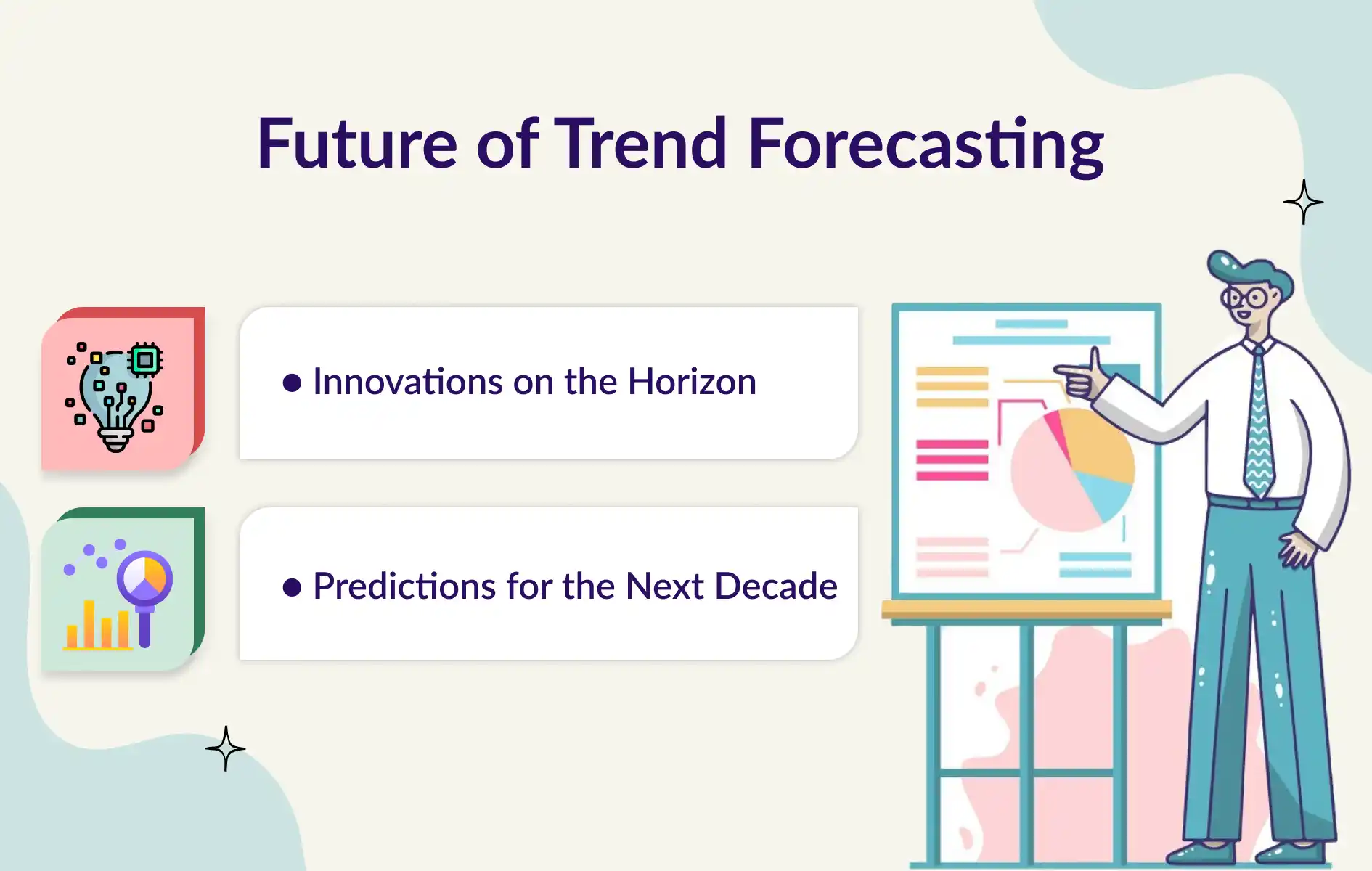
● Innovations on the Horizon
The future of trend forecasting looks promising with advancements in AI and machine learning. AI/ML-based demand forecasting will enhance the accuracy and efficiency of trend predictions.
● Predictions for the Next Decade
Over the next decade, we can expect Trend forecasting to become even more integral to business strategy. Companies will increasingly rely on real-time data and predictive analytics to stay competitive.
Conclusion
Trend forecasting is an invaluable tool for businesses looking to stay ahead in an ever-evolving market. Follow a structured process. It will help you find and use new trends. Mastering Trend forecasting will be crucial for success.
FAQs
1. What is trend forecasting?
Trend forecasting is predicting future trends in industries by analyzing past data, consumer behavior, and market changes.
2. How do you do trend forecasting?
Trend forecasting involves gathering data, spotting patterns, and using tools like analytics and expert insights to predict upcoming trends.
3. What is the most important aspect of trend forecasting?
The most important aspect is accurate data collection and analysis. Without reliable data, your forecasts are likely to be inaccurate.
4. How often should trend forecasts be updated?
We should update trend forecasts often. We should do this ideally every quarter. This ensures they reflect the latest market conditions and data.
5. Can small businesses benefit from trend forecasting?
Absolutely! Forecasting trends can help small businesses. It helps them stay competitive by predicting market shifts and consumer preferences.
6. How can Trend forecasting impact strategic planning?
Trends forecasting provides valuable insights. It can inform planning and help businesses make informed decisions. They can use the insights for product development, marketing, and resource allocation.